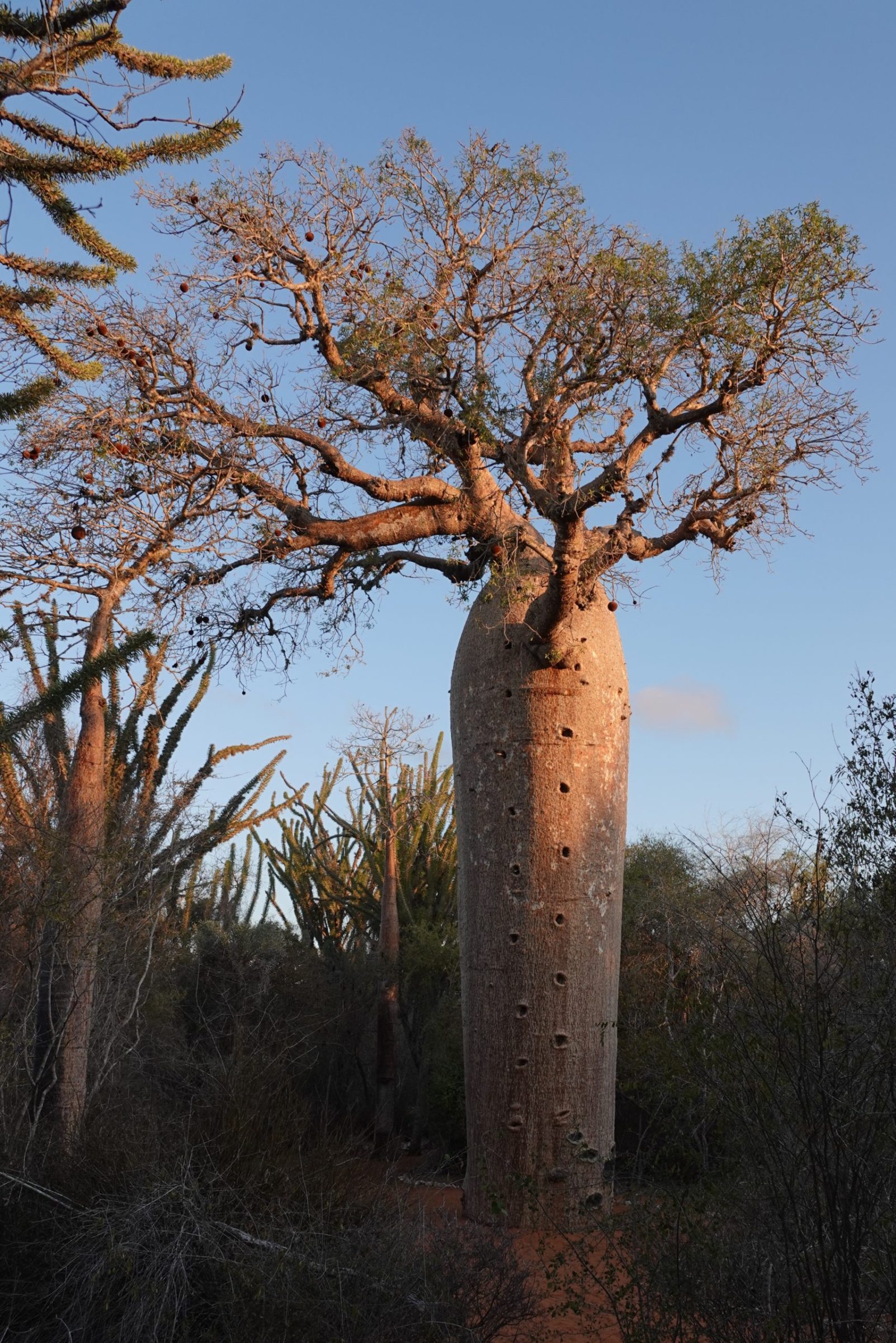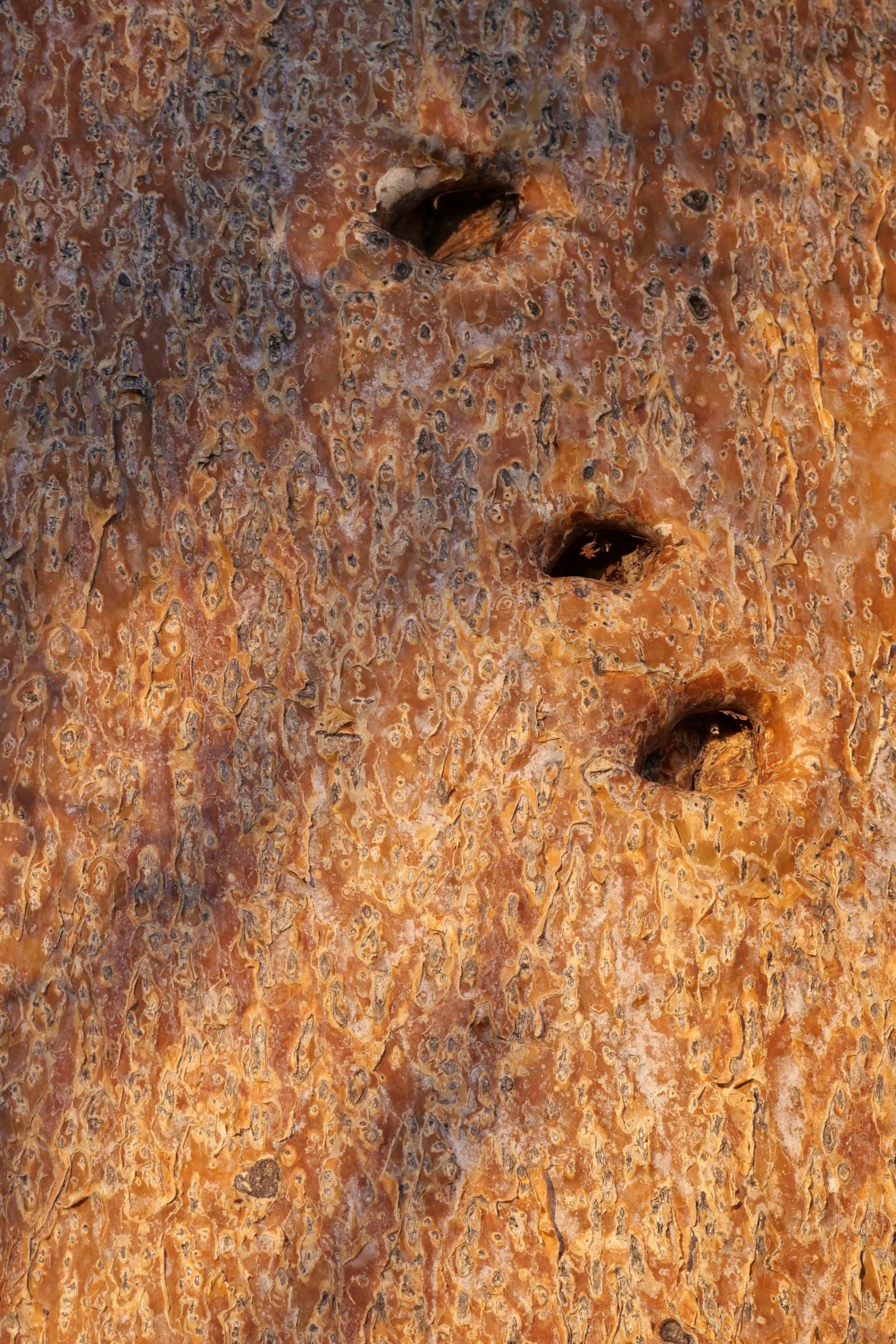The “skin” of almost any tree will reward your close attention.
There are just nine recognised species in the genus Andansonia – the baobabs.
One is Australian.
Two live in Africa and the Arabian Peninsula.
The other six – this one included – are Madagascan, only.

Both photos show the same individual on an autumn late afternoon, near Ifaty, in Madagascar’s southwest.
In terms of human material wealth, this very hot, dry region is one of the very poorest parts of one of the world’s poorest nations.
Culturally, however, it is a rich place.
Botanically and zoologically, it is fabulously rich.
Click here to see and learn a little about all six of Madagascar’s baobab species.
The species shown – Adansonia robrostipa – grows at a rate of circa 12 millimetres per year, so this post’s tree – although not an especially large example – must be very much older than the Australian Federation.
Click this to learn more about its particular location – a private, local-community-benefiting reserve, with a name that means mother of the forest.
—
Today’s musicians are… well, who else could they be?
They are West African masters of the art of making you feel good all over, as they deliver mostly-moralising songs.
Even very “two left feet” persons (me, for example) feel compelled to dance when Orchestra Baobab is audible.
Founded in 1970, the Dakar-based group were named after the venue where they were the “house band”.
That club had a Baobab-evoking interior.
Orchestra Baobab soon became Senégal’s most popular group.
They were “enormous”, across West Africa.
Although Dakar-based, the band’s membership always encompassed several nations, diverse ethnicities, various cultural “roots”, and different first languages.
Musically, they were always “open”, eclectic.
In the 1980s, however, they became “has beens”, out of fashion, terminally unhip.
In 1987, 20 albums into their career, Baobab disbanded.
By 1989, however, European “world music” enthusiasts had “discovered” them.
Radio station switchboards metaphorically melted whenever one 1982 vintage Orchestra Baobab number was broadcast.
The Cuban-ish song was Utru Horas, which prompted World Circuit Records to present the band’s hitherto “unsuccessful” 1982 sessions to the world.
Pirate’s Choice became one of the “World Music” boom’s “biggest” albums.
So, the band reformed…reached a global audience, and even regained general esteem in their own lands.
Orchestra Baobab is going strong, still, performing worldwide, epidemics permitting.
The current edition includes some founders, and a superb “new” guitarist who is 47 years younger than their oldest member.
Their incredible story is nicely mentioned here, and click this for a more detailed, chronological account.
Here is their signature number, “live”, in November 2017:
Their most recent album – an excellent one – was issued in 2017.
Tribute to Ndiouga Dieng was named for one of Orchestra Baobab’s original singers, who died in November 2016.
His son Alpha now is a member, and I think (underline think) that he may have been the young singer you just saw and heard.
Its guitar soloist, from Benin, was René Sowatche, who also plays beautifully on what you are about to hear, from the 2017 album.
Thione Seck (born 1955, in Dakar) is the arresting lead singer, revisiting a 1970s Baobab classic.
This wedding song urges the young groom to respect his wife, and never let her down.
